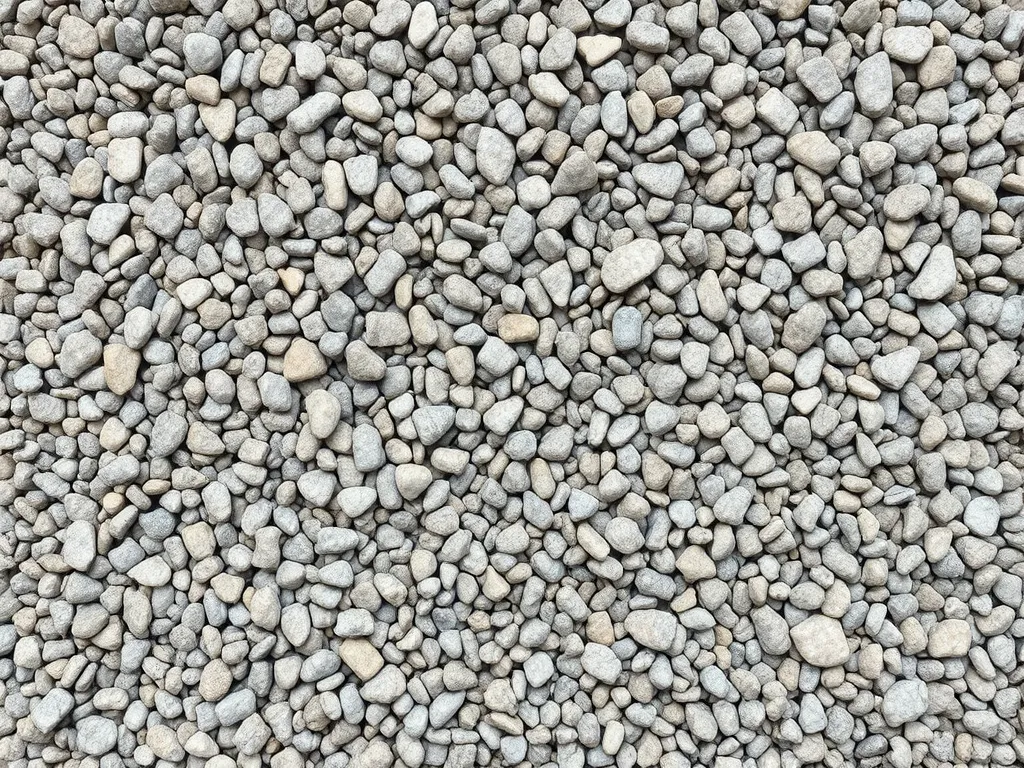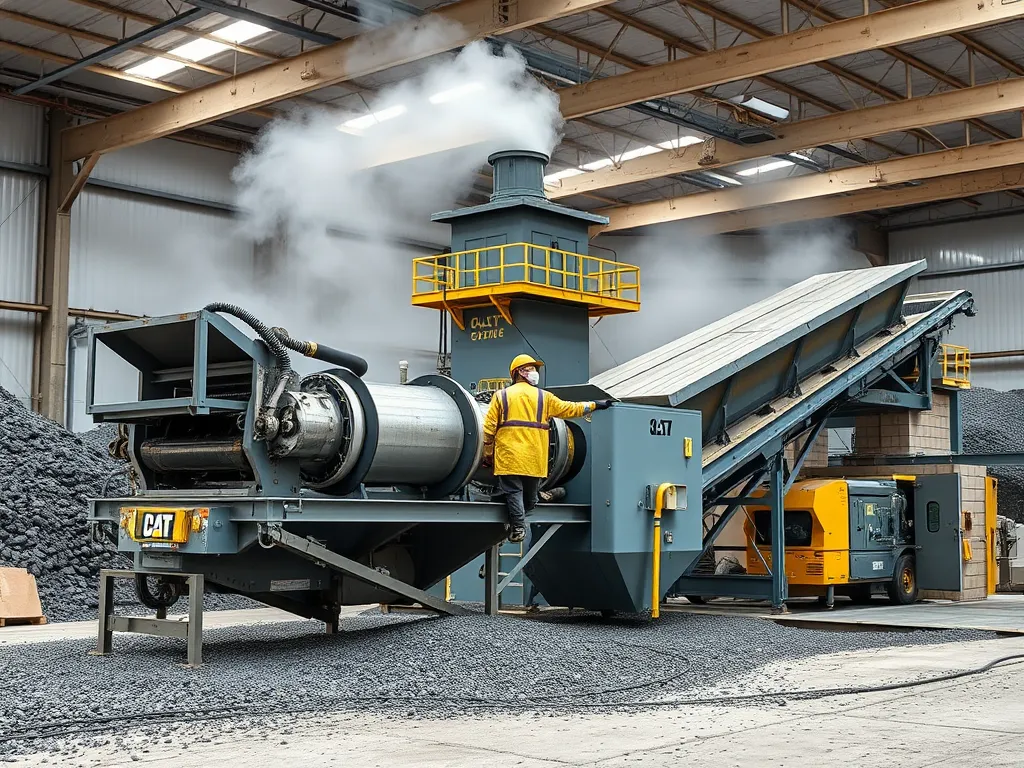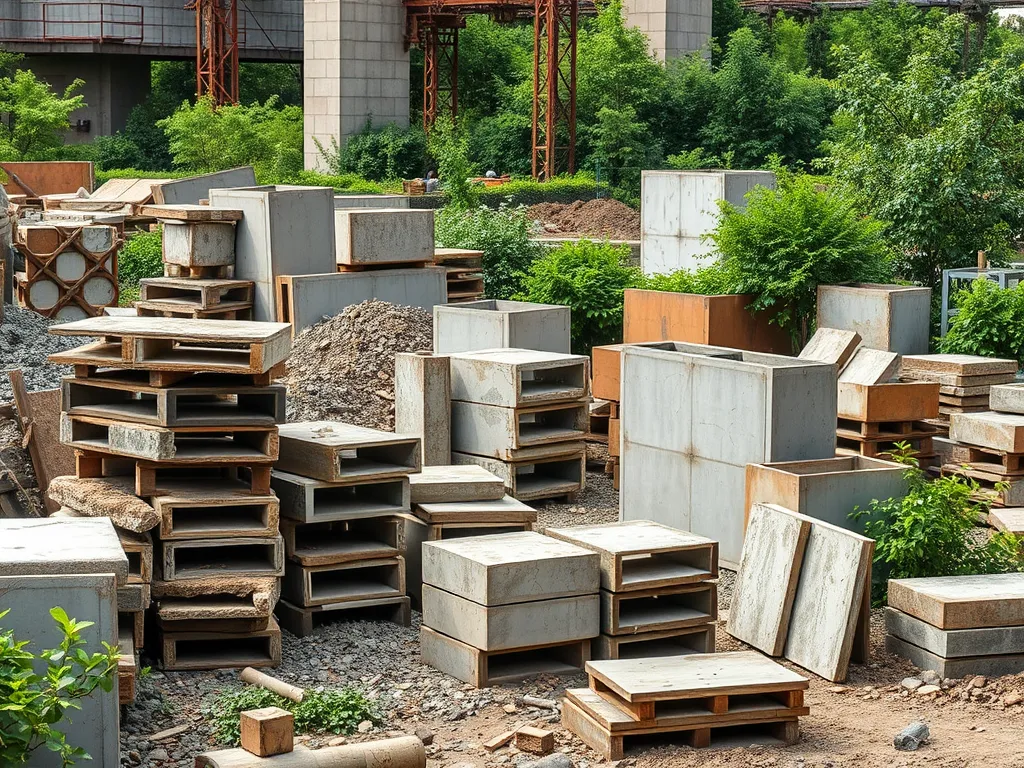Natural Vs Recycled Aggregates in Asphalt Production
Published on: November 2, 2025 | Last Updated: April 14, 2025
Written By: George Voss
Natural aggregates (gravel, sand, limestone) and recycled aggregates (crushed concrete, reclaimed asphalt pavement, slag) form the structural base of asphalt mixes but differ in origin, performance, and eco-impact. Mined from quarries, natural aggregates offer predictable strength with 95-100% density ratings, while recycled materials reuse demolished pavement or construction debris, cutting material costs by 20-30% and reducing landfill waste by 1.2 tons per recycled ton. Engineers balance factors like load capacity (3,200 psi vs 2,500 psi), winter cracking risks, and local availability when selecting materials.
This article compares both aggregate types across critical factors for asphalt projects. We evaluate durability under heavy truck traffic, temperature resistance from -40°F to 160°F, and compliance with ASTM D692/D7552 standards. Key sections detail extraction versus recycling processes, cost differences ($18/ton natural vs $11/ton recycled), and how state DOT specifications influence material choices in highway construction.
Contents
- Understanding Aggregates in Asphalt Applications
- Natural Aggregates for Asphalt
- Recycled Aggregates for Asphalt
- Natural Vs Recycled Aggregates in Asphalt Applications
- Advantages Of Natural Aggregates in Asphalt
- Advantages Of Recycled Aggregates in Asphalt
- Environmental Impact and Rules
- Frequently Asked Questions
- Closing Thoughts
- Additional Resources for You:
Understanding Aggregates in Asphalt Applications
Aggregates form the backbone of asphalt mixes, making up 90-95% of the material by weight. These granular components determine pavement strength, drainage properties, and long-term performance. Selecting between natural or recycled options directly impacts project outcomes.
Role Of Aggregates in Asphalt Mix Design
Aggregates provide structural support through particle interlock while allowing bitumen to bind the mix. Their angularity influences compaction, while surface texture affects skid resistance. Particle size distribution (gradation) controls void spaces – critical for preventing rutting or cracking under loads exceeding 3,000 psi.
Key Aggregate Types for Asphalt Pavement
Two primary categories dominate the market: materials sourced directly from nature versus those reprocessed from existing infrastructure. Each brings distinct properties to pavements.
Natural Aggregates (Gravel, Sand, Limestone)
Mined from quarries or riverbeds, these include angular crushed stone (granite, basalt) or rounded gravel. Limestone remains popular due to its 2.7-2.9 g/cm³ density and low water absorption under 2%. Natural materials offer predictable gradation curves meeting ASTM D692/D1073 specs, vital for mix designs requiring precise voids in mineral aggregate (VMA) between 14-16%.
Recycled Aggregates (Crushed Concrete, Reclaimed Asphalt Pavement, Slag)
Repurposed materials like Reclaimed Asphalt Pavement (RAP – milled old pavements) or Crushed Concrete Aggregate (CCA) reduce virgin material use by 20-30%. Steel slag, with its rough texture and 4.5-5.0 Mohs hardness, enhances friction but requires processing to remove metals. Recycled content typically ranges from 15-30% in mixes, limited by binder compatibility and gradation variability.
Having explored the fundamental types, the next segment examines how sourcing methods influence performance in real-world paving scenarios.
Natural Aggregates for Asphalt
Natural aggregates form the backbone of asphalt mixes across North America. These materials provide structural integrity and skid resistance while meeting strict pavement specifications.
Sources and Extraction Methods
Quarries, gravel pits, and riverbeds supply 92% of natural aggregates used in U.S. asphalt production. Common materials include:
- Crushed granite from bedrock blasting
- River gravel collected through dredging
- Limestone extracted via surface mining
Extraction requires heavy machinery like jaw crushers and cone crushers to reduce rock sizes. Permitting under the Clean Water Act regulates water discharge during washing operations.
Performance Characteristics in Asphalt Mixes
Natural aggregates set baseline standards for asphalt pavement quality. Their geological formation creates predictable engineering properties.
Durability and Weather Resistance
Granite and limestone aggregates typically show 98% resistance to freeze-thaw cycles in ASTM D692 tests. Their low porosity (1-3%) prevents water infiltration that causes pavement cracking. LA abrasion loss values under 35% indicate strong wear resistance for high-traffic roads.
Consistency in Gradation
Natural aggregates maintain tighter size specifications than recycled materials. Screeners sort crushed stone into uniform fractions meeting AASHTO M43 gradation bands:
- Coarse aggregates: 3/4″ to No.4 sieve
- Fine aggregates: No.4 to No.200 sieve
This consistency allows precise asphalt mix designs with 95% density targets in Superpave systems.
While natural aggregates set performance benchmarks, recycled alternatives bring unique benefits that reshape modern pavement construction. Let’s examine how reprocessed materials stack up against geological sources.

Recycled Aggregates for Asphalt
Using old materials in asphalt mixes cuts down on quarrying and landfill use. Two common options – RAP and CCA – show how construction waste gains new life in roads. Both options work with natural stone but bring unique traits to pavement projects.
Common Materials in Recycled Asphalt Aggregates
Broken pavement and concrete rubble form most recycled aggregates. These materials go through sorting and crushing to match sizing for asphalt production.
Reclaimed Asphalt Pavement (RAP)
RAP comes from milling old roads or parking lots. It contains 95% natural stone plus 5% asphalt binder. When hot-mix plants add RAP, this existing binder softens at 300°F, blending with new liquid asphalt. Typical mixes contain 15-30% RAP, saving $3-$8 per ton versus virgin materials.
Crushed Concrete Aggregate (CCA)
CCA starts with building slabs, sidewalks, or road bases. Jaw crushers break it into ½” to 2” chunks. Unlike RAP, CCA lacks asphalt binder – plants add extra liquid asphalt (0.5-1% more) for proper coating. Its high porosity can boost rutting resistance by 12% in surface layers.
| Material | Binder Content | Typical Use | Cost/Ton |
|---|---|---|---|
| RAP | 3-7% | Base, Surface | $10-$15 |
| CCA | 0% | Base, Subbase | $8-$12 |
Processing Requirements for Asphalt Recycling
Turning rubble into road materials demands specific steps. Plants first sort incoming loads, pulling out wood, metals, or plastics. Crushers grind chunks to target sizes, while screens split particles into gradations meeting ASTM D692/D693 specs. RAP needs warming drums to activate old binders; CCA requires washing to remove concrete dust.
- RAP: Fractional milling → Stockpiling → Heating → Mixing
- CCA: Demolition → Sorting → Crushing → Washing → Grading
Processing costs run $5-$10/ton for recycled vs $15-$25/ton for quarrying virgin stone. But recycled stock may vary in quality – RAP binder hardness shifts with original mix designs, impacting final pavement flexibility.
How do these factors sway pavement longevity? Upcoming data on load ratings and thermal cracking will clarify lasting impacts.
Also See: Asphalt Technology in Emerging Economies: Future Outlook
Natural Vs Recycled Aggregates in Asphalt Applications
Choosing between natural aggregates like gravel or limestone and recycled options such as RAP or crushed concrete demands careful analysis. Performance, cost, and processing needs vary significantly across material types.
Performance Comparison
Road engineers prioritize structural integrity when evaluating natural vs recycled aggregate. Key factors determine how each material performs under stress and weather.
Load-Bearing Capacity
Natural aggregates typically deliver 10-15% higher load-bearing values than recycled materials. Crushed limestone averages 3,500-4,500 psi compressive strength, while RAP mixtures range 2,800-3,600 psi. This gap narrows when blending 30% recycled content with virgin stone.
Temperature Susceptibility
Recycled aggregates containing aged asphalt binder show greater stiffness in cold climates. PG 64-22 binders mixed with 40% RAP require 12°F higher mixing temps compared to virgin mixes. Thermal cracking risks rise when recycled content exceeds 25% without polymer modifiers.
Long-Term Pavement Performance
Ohio DOT studies show pavements with 20% recycled aggregate last 14-17 years versus 18-22 years for natural aggregate roads. Performance gaps shrink when pairing recycled materials with SBS-modified binders or fiber additives.
Cost and Availability Factors
Budget and logistics often dictate aggregate selection as much as technical specs. Regional material access creates trade-offs between initial spend and long-term savings.
Initial Material Costs
Recycled aggregates cost $8-$15/ton versus $18-$30/ton for natural stone. These savings drop 20-35% when factoring in processing fees for crushing, screening, and contaminant removal from recycled stockpiles.
Local Sourcing Challenges
Urban projects within 50 miles of recycling centers save 15-25% on hauling costs compared to rural sites needing quarried stone. Only 38% of US counties have permitted RAP processing facilities, creating supply gaps in agricultural regions.
Processing Requirements Comparison
Transforming raw materials into asphalt-ready aggregates demands different approaches for natural and recycled feedstocks.
Gradation Control Methods
Natural aggregates require simple sieving to meet ASTM D692 specs, while recycled materials need multi-stage crushing. A 3-deck screen plant processes RAP 40% slower than virgin stone to achieve ½” minus gradation.
Contaminant Removal Needs
Recycled aggregates undergo magnet separation (removing 98% of rebar) and manual debris sorting. Processing adds $3-$7/ton versus $0.50-$2/ton for washing natural aggregates.
With performance specs and cost variables mapped, the debate shifts to environmental impacts – a key factor shaping modern asphalt standards.

Advantages Of Natural Aggregates in Asphalt
Natural aggregates like gravel, limestone, and sand remain the backbone of asphalt production across North America. These materials offer distinct benefits that influence pavement decisions when comparing natural vs recycled aggregate options.
Proven Performance History
Decades of field data confirm natural aggregates deliver predictable results. Limestone mixes show rut resistance exceeding 10,000 load cycles in AASHTO T324 testing. Granite aggregates maintain skid resistance above 50 BPN (British Pendulum Number) after 15+ years in high-traffic roads. State DOTs rely on this track record when specifying materials for critical projects like interstate highways.
Immediate Availability
Over 5,000 active quarries supply natural aggregates nationwide, enabling same-day delivery for most projects. This eliminates delays common with recycled aggregate sourcing, where material availability depends on local demolition activity. Hot-mix asphalt plants stockpile 6-12 months’ worth of natural stone, ensuring continuous production regardless of recycling market fluctuations.
Standardized Testing Protocols
ASTM D692 and AASHTO M29 govern natural aggregate quality control with established methods:
- LA Abrasion Loss: ≤ 40% for surface courses
- Soundness Loss: ≤ 12% after 5 sulfate cycles
- Flat & Elongated Particles: ≤ 10% by mass
These universal standards simplify mix design compared to recycled aggregate vs natural aggregate evaluations requiring project-specific contamination screens and RAP binder tests.
While natural materials set reliability benchmarks, modern recycling technologies are reshaping the aggregates natural vs recycled conversation. Next, we examine how reprocessed materials compete through cost and sustainability gains.
Advantages Of Recycled Aggregates in Asphalt
When weighing natural vs recycled aggregate options, recycled materials offer unique perks in asphalt projects. Let’s break down three key benefits.
Cost Reduction Potential
Recycled aggregate cuts costs by 30-50% vs natural stone. Crushed concrete costs $8-$15 per ton, while gravel runs $18-$30. RAP (reused asphalt chunks) needs 20% less new binder, slashing mix prices. Local sources trim truck fees – haul range drops from 50+ miles for quarried rock to under 15 miles for recycled stockpiles.
| Material | Cost Per Ton | Typical Haul Distance |
|---|---|---|
| Natural Gravel | $18-$30 | 50 miles |
| RAP | $10-$18 | 8 miles |
| Crushed Concrete | $8-$15 | 12 miles |
Waste Diversion Benefits
Each ton of recycled aggregate keeps 1.3 tons of debris from dumps. The EPA notes 140 million tons of old concrete and asphalt get reused yearly – equal to 4,700 football fields filled 10 feet deep. This swap reduces quarry needs: 1 mile of road built with 60% recycled stuff saves 3,000 tons of virgin rock.
LEED Certification Contributions
Using recycled aggregate vs natural stone earns up to 15 LEED points. Projects gain credits for:
- Materials reuse (5 points)
- Regional sourcing (4 points)
- Waste cuts (6 points)
Chicago’s Jane Byrne Interchange scored LEED Gold using 220,000 tons of recycled concrete – proof these tactics work at scale.
While recycled aggregate shines in these areas, its green perks come with trade-offs. Next, we’ll explore how both options affect ecosystems and meet ASTM specs.

Environmental Impact and Rules
Both natural and reused rocks shape how paving jobs affect our world. Let’s break down key eco-facts and rules in this part.
Earth-friendly Perks Of Reused Rocks
Reused cuts down waste by 90% versus mined rocks. Each ton stops 1,800 lbs of CO2. Crushed old roads need 95% less energy than new gravel. These gains help projects earn LEED points for green building. Less trash goes to dumps—up to 5 million tons yearly in big states like Texas.
Digging Damage From Mined Rocks
Mining fresh gravel strips 2 acres per 50,000 tons. It eats up wild homes and taints streams with silt. One quarry can spew 10 tons of dust each month. The U.S. uses 2.5 billion tons of mined rock each year—a drain on Earth’s crust that can’t be fixed.
ASTM Rules for Safe Reuse in Paving
ASTM D692 sets specs for reused road chunks in new mix. Tests check rock size (gradation) and junk levels (under 0.5%). ASTM D1073 guides how to blend old tar with new for smooth roads. Some states now allow 30% reused road chunks in highways if tests pass.
Now let’s look at common questions builders ask when picking rocks for their job.
Frequently Asked Questions
How Does Recycled Concrete Aggregate Differ From Natural Aggregate in Asphalt Mixes?
Recycled concrete aggregate (RCA) is sourced from demolished concrete structures and lacks the asphalt binder found in reclaimed asphalt pavement (RAP). While natural aggregates like gravel or limestone are virgin materials, RCA must be processed, which includes crushing and screening to meet size specifications for asphalt mixes. This difference in material origin and processing can lead to variations in performance characteristics, such as load-bearing capacity and overall consistency in asphalt application.
What Distinguishes Natural Aggregates From Manufactured Aggregates in Asphalt Production?
Natural aggregates are obtained directly from natural sources and possess inherent properties that are shaped by their geological formation. In contrast, manufactured aggregates are industrially produced and may involve artificial processes, such as heating or crushing specific materials to achieve desired specifications. This fundamental difference often influences the performance characteristics and overall quality of the aggregates when used in asphalt production.
Why Choose Recycled Aggregates Over Virgin Materials for Asphalt Projects?
Choosing recycled aggregates can lead to significant cost savings, reduce environmental impact by diverting waste from landfills, and potentially earn sustainability credits such as LEED points. Additionally, using recycled aggregates can lower the demand for virgin materials like gravel, which contributes to resource conservation and ecological preservation. Moreover, as technologies in recycling improve, the performance of these aggregates is becoming increasingly competitive with that of natural sources.
What Quality Advantages Do Natural Aggregates Provide in Asphalt Pavements?
Natural aggregates offer several quality advantages, including greater durability, predictable performance, and tighter gradation control. The geological origins of these materials give them consistent strength and low porosity, ensuring high resistance to freeze-thaw cycles and wear. Natural aggregates generally meet strict industry standards, providing a verified history of successful applications in various asphalt projects, thereby instilling confidence in engineers when specifying materials.
Closing Thoughts
When choosing between natural and recycled aggregates for asphalt production, consider the specific needs of your project. Each type has distinct advantages that can enhance pavement quality and sustainability. Natural aggregates offer proven performance and immediate availability, while recycled aggregates provide cost savings and reduce environmental impacts.
Asphalt containing recycled materials not only helps divert waste from landfills but also aligns with LEED certification goals, promoting sustainable construction practices. Balancing cost-effectiveness with performance and environmental impact is key in making the right choice.
For further information and resources on aggregates and asphalt applications, visit Asphalt Calculator USA.


